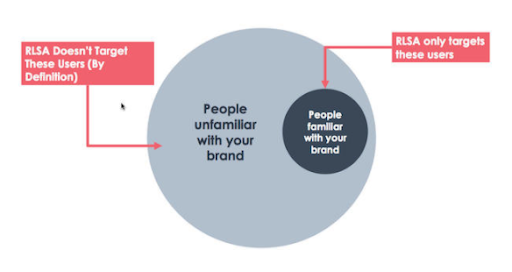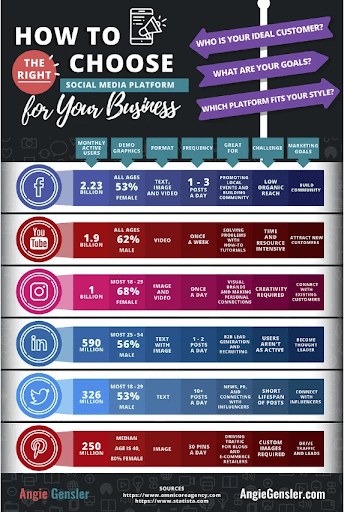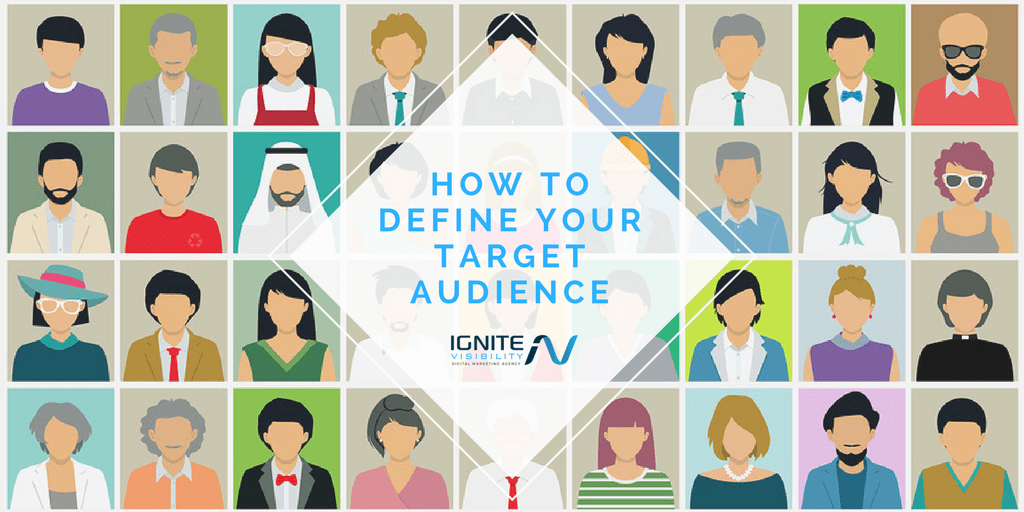In search of the perfect digital advertising strategy? It may seem like a mythical unicorn, but it does exist.
You need to learn how to use audiences, create effective ad sequences, and build better landing pages that convert traffic. You need strong content for every stage of the funnel.
In the video and blog below, I’ll talk about how you can make a cohesive digital advertising plan that will maximize your paid search budget.
Chose Your Audiences
Running an ad campaign that maximizes your online advertising dollars is all about targeting the right audiences. Facebook, Instagram, YouTube, Google Display Network, and the other major platforms all allow you to create audiences based on remarketing. You can overlay them with demographics like age, income, or location, depending on the platform.
Sending out ads to anybody who’s been to any part of your website in the last 90, 60, 30 or even 10 days is too general. To determine who to target, segment your website into high-value and lower-value pages. A visitor who goes to a high-value page and then leaves is probably worth more than a visitor to a low-value page.
You’ll want to create an audience-building strategy around each of these metrics:
60-Day Audience for Top Pages
Your top pages are those that have the best conversion rates, like contact pages, lead gen forms, or the shopping cart. Use Google Analytics to determine which of your pages convert the highest and pull the visitor demographics. Retarget everyone in these groups who visited your site in the past 60 days.

Google ads advance audience targeting
60-Day Audience for High-Value Pages
The most important pages of your website include the home page, category pages, product pages, and thank you page. This audience also includes those who have abandoned a cart or converted in the past. They’re a powerful cohort because they’re highly likely to convert. Use Google Analytics again here to determine the pages and demographics to target.
Lookalike Audiences
Most platforms also allow you to target lookalike audiences. These are people who have similar characteristics to your existing target audience. Each platform uses an algorithm to sort through its user data and find new prospects that have the highest likelihood of being interested in your product or service. You can see why these audiences are valuable.
Segmentation of Top Pages
Over time, you’ll want to refine your 60-day top pages audience so that you can serve more personalized ads. The way you categorize and target will vary based on your industry and customer base, but some effective segments include new versus repeat visitors, geographic location, and different sources (e.g. those who arrive at your site from mobile, social media, email, etc.).
Email Subscribers
Don’t forget your email subscribers! Your email lists are a valuable marketing asset, and you can use them for more than sending out newsletters. Users on platforms like Facebook, LinkedIn, Twitter, and Instagram typically sign up using an email address. They can match your list with their records and also create lookalike audiences for extra impact.
Create the Ad Sequence
Once you have your audiences targeted, it’s time to think about creating a high-impact ad sequence. For each audience, ask yourself, what are the first things you want them to see? You can apply this ad sequence on all of the major platforms.

How do you which type of social media content works best on which platforms?
Each platform has different types of ads based on length, format (video versus photo), and what people want to see on that channel. YouTube ads are very different from Google Display. Facebook ad copy is very different from LinkedIn ad copy, where users are more business-focused.
But no matter which platform you’re advertising on, an ad sequence will typically be made up of three types of ads.
Awareness Ads
Awareness is the very top of the funnel. These audiences may have never heard of your company before, or they may have recently heard about you but aren’t sure how you can help them. Your ad here should be a “soft sell,” focusing on a feel-good image and memorable copy that relates what your brand is all about.
Consideration Ads
In the consideration phase, prospects are doing more research about your business. They’re wondering how you can help and why you’re better than your competitors. Your ad here should be about a specific, unique benefit that you provide. Make sure your copy sounds knowledgeable and reassuring—you’re the expert in your field, and the prospect should trust you.
Conversion Ads
By the time prospects get to the conversion stage, only the most serious buyers are left. They’re ready to make a decision, but they need that extra push. This stage is all about the offer. Make sure your ad and copy reflect a strong offer, with power words like “free” and “limited time.” And don’t forget to look into LinkedIn lead gen forms at this stage.
Build the Landing Pages
The intent of any online advertising campaign is to work prospects down the funnel—and eventually make the sale. To do that, every ad needs to drive customers to a landing page that is specific to the targeted audience. For each landing page, think about the position in the funnel and then determine the best offer and topic.

Using images often leads to higher converting landing pages
Once a user interacts with a top-funnel page, they’ll then be served the mid-funnel ad and be taken to the mid-funnel landing page, and so on, until after 90 or 120 days, you’ll serve them an ad to make the sale. By understanding the buyer’s journey, you’ll maximize your online advertising dollars.
Awareness Pages
Like your ad, these top-funnel pages are a soft sell. Your offer should educate the prospect about how they can solve the problem they’re having. White papers, guides, ebooks, checklists, and educational videos all work well at this stage.
The key is to make it about a general problem, not about your company specifically. Make sure any calls to action are organic and natural, not salesy. Finally, give your content a title that matches the stage of the funnel. For top-funnel content, “how to” titles will typically capture what prospects are looking for.
Consideration Pages
After a prospect visits an awareness page, you’ll nurture them with the next ads in the sequence and send them to consideration pages. These pages involve a product or service and are specific to your company. In short, they tell prospects why you’re the best.
Offers like case studies, webinars, free samples, catalogs, and spec sheets (which are often used for technical products and services) work well here. Educational articles that compare your company to another are also a great tool, and can capture common search terms at this phase, like “{{your company}} versus {{competitor}}.”
Conversion Pages
Prospects in the conversion stage are ready for a hard sell. They’re much more likely to talk to sales, provide their information, or sign up for something than customers earlier in the funnel.
A conversion landing page can offer a coupon or discount, a free trial, or a complimentary demo, consultation, or estimate. If the prospect doesn’t convert, send them back to the middle of the funnel and keep nurturing those leads.
Track and Refine
The cornerstone of maximizing online advertising dollars—and of maximizing dollars in any marketing campaign at all—is always to track and refine your results. Look at your audiences and ads on a consistent monthly basis and refine them. It’s the only way to maximize your ROI.
Each platform has its own interface where you can track total clicks, click-through rate, cost per click, and more for your ad campaigns. Then you can use split testing to compare ads, see which perform best, and refine your campaigns for each platform.
Once a user gets to your landing page, you can track their behavior using Google Analytics. Get information like unique page views, time spent on page, the user journey through your website, and the origins of each user. This lets you refine your landing pages to be more effective. For example, if time spent on page is low, chances are that users aren’t finding what they need, and they’re abandoning the site.
Using these insights, you can do the math for the five most important metrics when it comes down to ROI: average purchase value, average purchase rate frequency, customer value, average customer lifespan, and customer lifetime value. These are the metrics your CMO wants to see.
Final Thoughts
ROI is always on the mind of every marketer. To maximize online advertising dollars, start with a strong foundation: the right audiences. Pull your analytics and put your dollars toward the audiences most likely to convert. Then create targeted ads with powerful images and copy that is specific to the audience and their stage in the buyer’s journey.
Drive them to a landing page with a strong offer, again tailored to the stage in the funnel. Track everything, refine your audiences, ads, and landing pages, and repeat. You’ve got a strategy that you can put to work, starting today.
